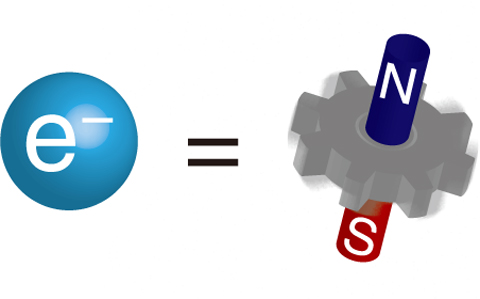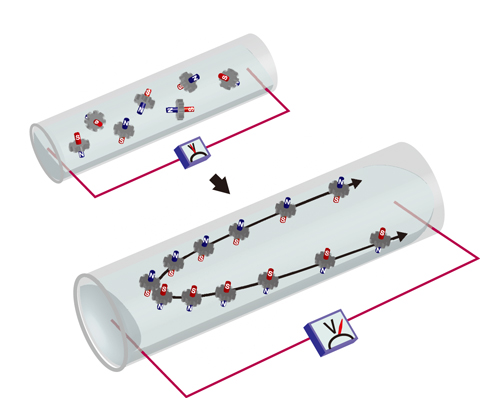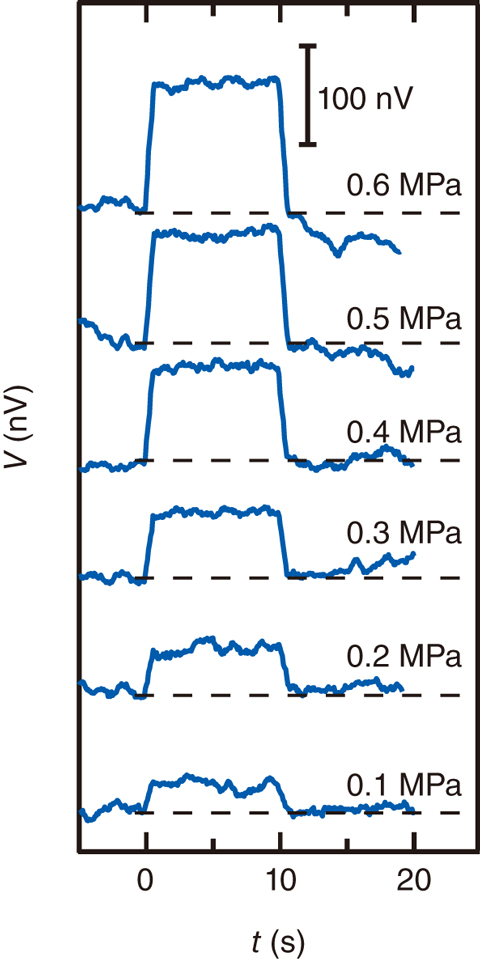
Fig.3-4 Visualization of an electron

Fig.3-5 Spin-current generation from a liquid-metal flow

Fig.3-6 Electric voltage from a liquid-metal flow
Quantum mechanics reveals that electrons are charged elementary particles with spin. Owing to this quantum mechanical spin, electrons can be imagined as a spinning gear with a magnet whose poles are parallel to the spinning axis. Since the spinning motion is perpetual, the magnetism is permanent (Fig.3-4).
We benefit significantly from spin via magnetic materials such as iron wherein spins are intrinsically aligned. Conversely, it is difficult to utilize electron-spin functions in non-magnetic materials because the spinning axes are incoherent and thus, the spins cancel each other out.
Recent nanotechnological progress enables us to utilize spins in non-magnetic materials and generate a spin current (i.e., a flow of electron spins). Conventional electric devices consume power owing to the Joule heating of the charge current; in contrast, alternative devices based on the spin current are considered to save energy as its Joule heating is known to be much smaller than that of the charge current.
Spin currents have previously been generated only in solids, but we have discovered a new mechanism of spin-current generation using liquids.
Our theoretical calculation predicts that a spin current can be generated owing to the vorticity (i.e., the local rotational motion) of a liquid metal. When a liquid-metal flow is excited in a fine pipe by applying pressure, vorticity is induced in the liquid. The vorticity aligns the spinning axes of the “gears”; consequently, a spin current is created (Fig.3-5). The prediction is confirmed experimentally using a fine pipe of radius 400 μm. The electric voltage observed because of the spin current was several hundred nano volts (Fig.3-6).
The result proves the existence of a coupling between electron spin and fluid vorticity for the first time. Owing to this coupling, microscopic spinning motion can be controlled by macroscopic fluid motion. From an application point of view, the observed generation effects can be used to make an electric generator in an ultra-small device.